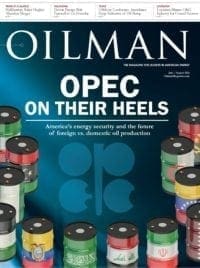The U.S. Environmental Protection Agency on May 12 said it has completed a set of rules intended to regulate methane and other emissions from new natural gas and oil drilling sites.
The new set of rules are focused on methane and other toxic chemicals and pollutants that can contribute to ground-level ozone; the rules have already received a wide range of comments from both public and industry representatives.
According to the EPA, the rules will cover new or updated hardware used for oil and natural gas wells, while also extending to sites that collect, process and compress natural gas for distribution; low production wells and compressor stations will be subject to increased monitoring as well.
The EPA said that its new methane rule will cut a greenhouse equivalent of 11 million metric tons of carbon dioxide for the U.S., while estimating that the rules will cost companies close to $530 million for implementation costs but will end up saving companies up to $690 million from reduced waste.
While the rules are focused on new and upgraded hardware, the EPA said that it intends to eventually regulate the emissions from previously existing hardware as well, saying in a statement that “EPA is also starting the process to control emissions from existing sources by issuing for public comment and Information Collection Requests that requires companies to provide the information that will be necessary for EPA to reduce methane emissions from existing oil and gas sources.”
The Obama administration has set a goal of reducing methane emissions from the oil and gas industry by 40 percent in 2025.




